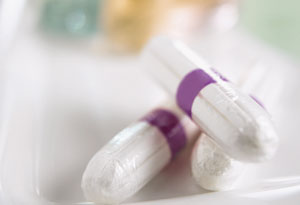Your Most Frequently Asked Health Questions—Answered
Do Tampons Still Cause Toxic Shock Syndrome?

Photo: Thinkstock
30 years ago, it was hard to escape the headlines about toxic shock syndrome (TSS), after more than 800 women suddenly began experiencing unexplained rash, fever, and other symptoms—and 38 died. Today, though, TSS is extremely rare. And only half of all cases are associated with tampon use.
TSS begins with a bacterial infection (usually staph or strep), which causes toxins to be released into the bloodstream. Such infections can develop in the aftermath of surgery or a severe burn, but the 1980 cases were linked to the use of superabsorbent tampons. Choosing a tampon with more absorbency than you need can lead to excessive dryness or ulcerations in the vaginal lining—creating an opportunity for infection.The epidemic led to the formation of a CDC task force, which found that one brand of tampons—Rely, which was so absorbent that it could last an entire menstrual period without needing to be replaced—posed a higher risk of TSS than others. The brand was subsequently taken off the market.
In the past three decades, the number of TSS cases has decreased dramatically. For example, a study of women in Minnesota found only three out of 100,000 were diagnosed with TSS in 2003. That doesn't mean you should disregard the TSS warnings that still come inside every box of tampons: As directed, choose low-absorbency tampons whenever possible, and change them frequently.
Does eating late at night make you gain weight?
As a reminder, always consult your doctor for medical advice and treatment before starting any program.



